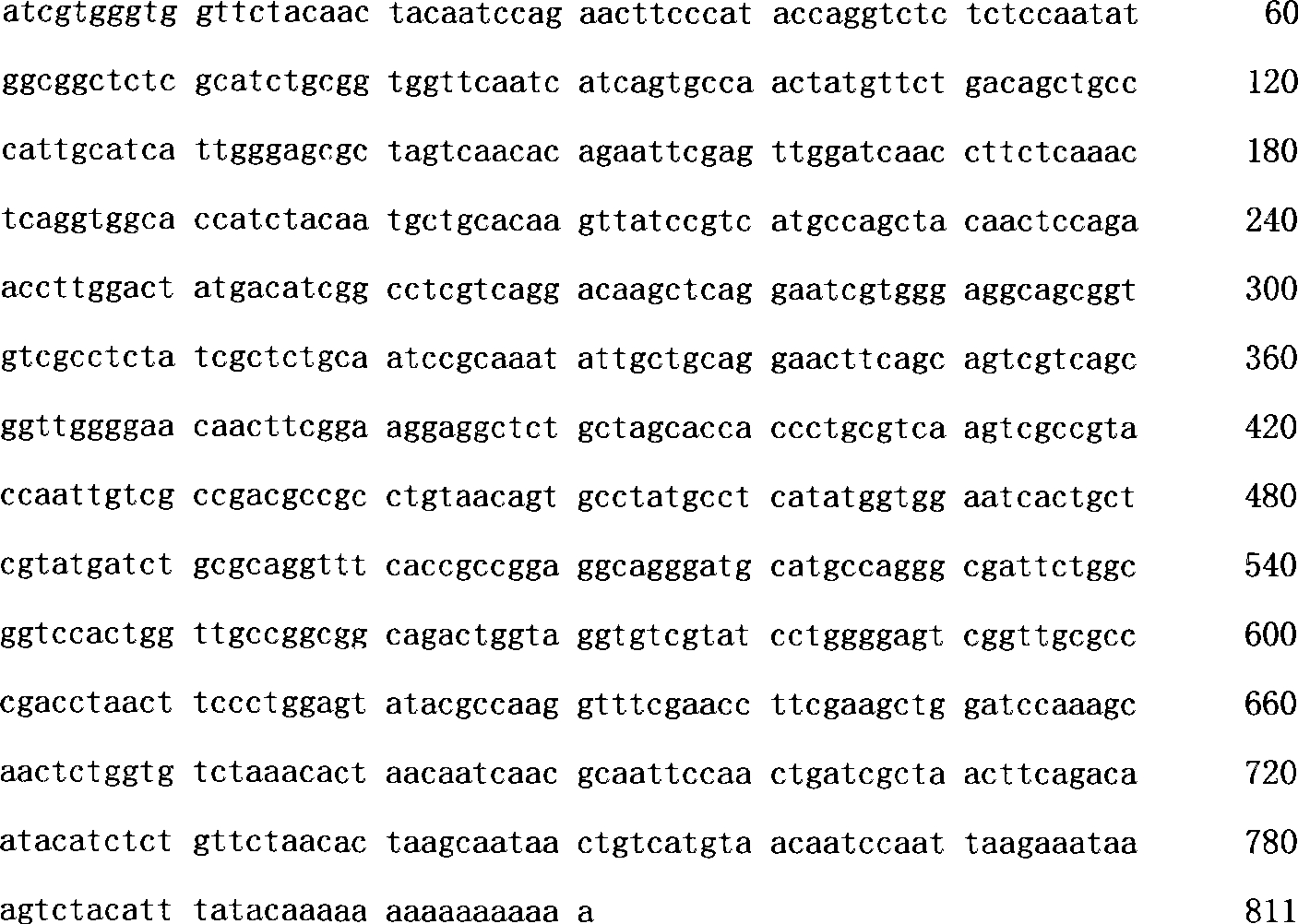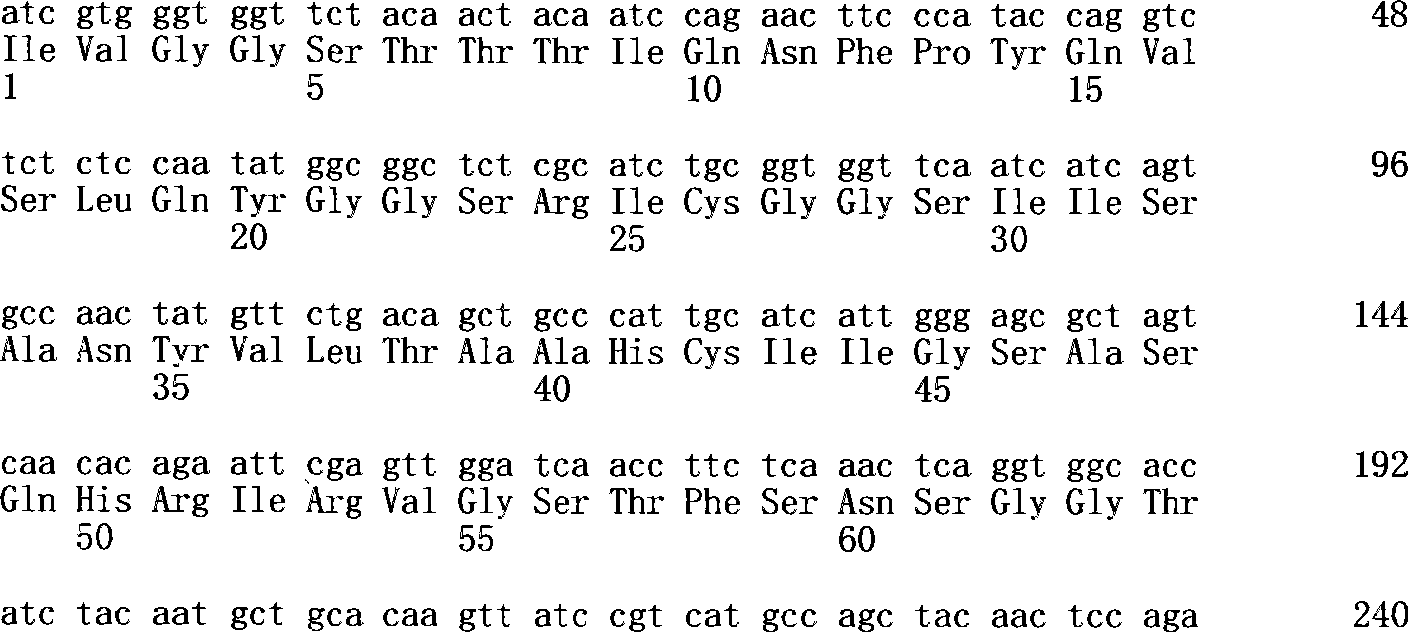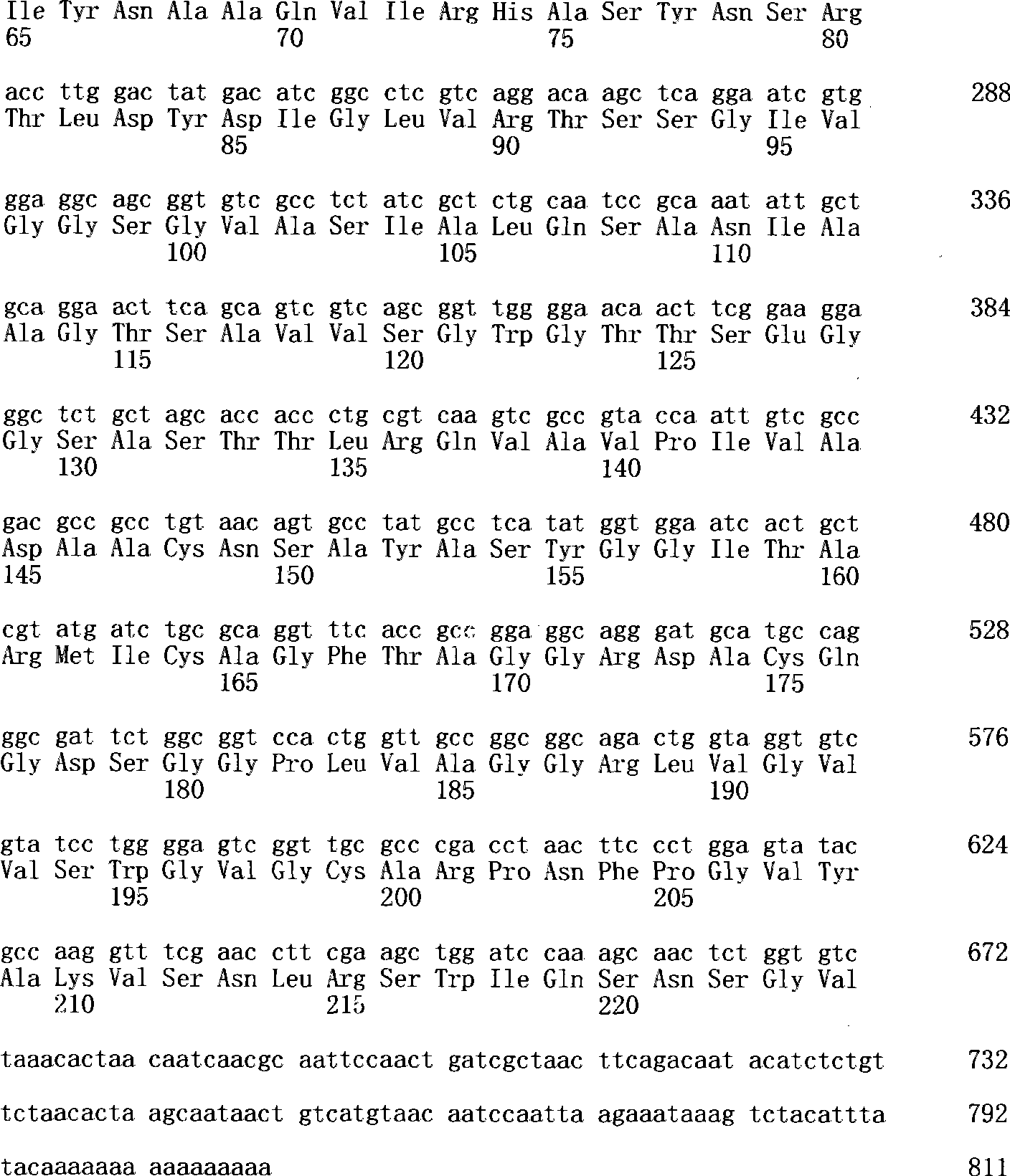Chinese Polyphaga fibrinolytic enzyme gene and preparation thereof
A technology of ground beetle and plasmin, which is applied in the field of genetic engineering, can solve the problems of complicated separation and purification of plasmin, protein inactivation, and inability to obtain a large amount of plasmin, and achieve considerable medical value, inhibit thrombus formation and dissolve thrombus Effect
- Summary
- Abstract
- Description
- Claims
- Application Information
AI Technical Summary
Problems solved by technology
Method used
Image
Examples
Embodiment 1
[0022] Example 1 Extraction of total RNA from Wood Beetle
[0023] Take a live healthy female ground beetle, wash it with 0.1% by volume of diethylpyrophosphate (DEPC) solution, cut open the abdomen with scissors without RNase, cut about 30 mg of the digestive cavity and midgut muscle of the ground beetle, and add 1.2 ml The ice-cold Trizol solution (added twice) was thoroughly ground, and the homogenate was placed in a 1.5ml Eppendorf centrifuge tube, and placed in an ice bath for 5 minutes to fully lyse. Centrifuge at 12000rpm for 5min at 4°C, take the supernatant, add 0.2ml of chloroform, shake for 20sec, and place in ice bath for 10min. Centrifuge at 12000rpm for 15min at 4°C, carefully absorb the upper aqueous phase, and transfer it to another centrifuge tube. Add 0.5ml of isopropanol to each tube, mix well, and place in ice bath for 10min. Centrifuge at 12000rpm for 15min at 4°C and discard the supernatant. The precipitate was washed once with 1 ml of 75% ethanol, dri...
Embodiment 2
[0024] The reverse transcription of embodiment 2 mRNA
[0025] 20 μl reverse transcription reaction system, containing 1 μg total RNA prepared in Example 1, 2.0 μgoligo(dT) 18 , make up to 11 μl with RNase-free double distilled water, heat at 70°C for 5 minutes, then ice-bath for 10 minutes, then add 5×buffer (250mmol / LTris-HCl, 250mmol / LKCl, 20mmol several MgCl 2 , 50mmol / L dithiothreitol (DTT) 4μl, 10mmol / L dNTP mix 2μl, RNase-free double distilled water to make up to 19μl, 37°C for 5min, then add M-MuLV reverse transcriptase 1μl (200U), 42 Incubate at °C for 1 hour, heat at 70°C for 10 minutes to terminate the reverse transcription reaction, cool in an ice bath and store in a -20°C refrigerator.
Embodiment 3
[0026] Example 3 Obtaining of EFE-1 fragments
[0027] 1) Design of EFE-1 fragment primers
[0028] Referring to the published sequences of earthworm plasminase and centipede plasminase kinase on NCBI, the conserved segment between the sequences was analyzed with Clustal 1.8 software, and a pair of degenerate primers were designed with the help of Primer Premier 5 software:
[0029] Upstream primer: 5'-CTN ACY GCW GCY CAY TG-3', SEQ ID NO: 7, degeneracy 64, encoding amino acid sequence LTAAHC;
[0030] Downstream primer: 5'-CC NCC NGA RTC WCC CT-3', SEQ ID NO: 8, degeneracy 64, encoding amino acid sequence QGDSGG;
[0031] Where R=A+G Y=T+C W=A+T N=A+T+G+C.
[0032] 2) PCR amplification of EFE-1 fragment
[0033] PCR amplification uses a 25ul reaction system:
[0034] 1ul of the reverse transcription product obtained in Example 2;
[0035] 1×Ruffer (0.5mol / L KCl, 0.1mol / L Tris-HCl, pH8.4);
[0036] MgCl 2 2.0mmol / L;
[0037] dNTPs 0.2mmol / L;
[0038] Upstream primer:...
PUM
 Login to View More
Login to View More Abstract
Description
Claims
Application Information
 Login to View More
Login to View More - R&D
- Intellectual Property
- Life Sciences
- Materials
- Tech Scout
- Unparalleled Data Quality
- Higher Quality Content
- 60% Fewer Hallucinations
Browse by: Latest US Patents, China's latest patents, Technical Efficacy Thesaurus, Application Domain, Technology Topic, Popular Technical Reports.
© 2025 PatSnap. All rights reserved.Legal|Privacy policy|Modern Slavery Act Transparency Statement|Sitemap|About US| Contact US: help@patsnap.com



